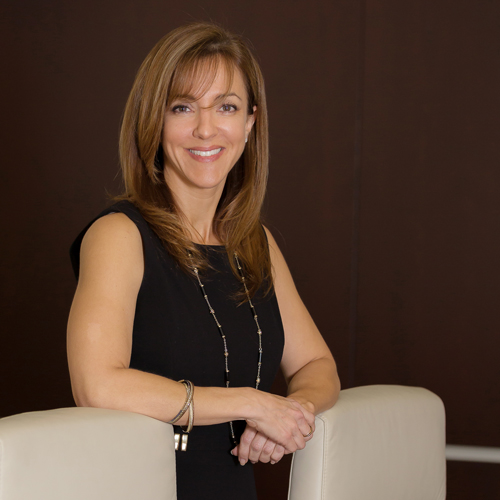Since its inception 61 years ago, McDonald’s has made billions selling hamburgers all over the world. For founder Ray Kroc, however, the road to success began with a failure.
In 1954, corporate lore goes, Kroc had secured from namesakes Dick and Mac McDonald exclusive the rights to franchise their quick-service restaurant concept around the country. He was looking for the perfect place to open his first McDonald’s when entrepreneurial animator Walt Disney unveiled plans for a new theme park called Disneyland. Because Kroc and Disney had served in the same unit during World War I, Kroc reached out to his old “war buddy” to ask about opportunities.
“Dear Walt,” the letter began. “I feel somewhat presumptuous addressing you in this way. Yet I am sure you would not want me to address you any other way . . . I have very recently taken over the national franchise of the McDonald’s system. I would like to inquire if there may be an opportunity for a McDonald’s in your Disneyland Development.”
Disney passed on the opportunity. Undeterred, however, Kroc opened his first McDonald’s in Des Plaines, Illinois, in 1955, catalyzing a global enterprise that now has more than 36,000 restaurants in more than 100 countries.
Anyone who knows this story can surmise that McDonald’s is the perfect place for someone like Gloria Santona. The daughter of a steel worker and a receptionist, she studied biochemistry at Michigan State University because she wanted to be a doctor. When she didn’t get into medical school, however, she had to pivot.
“I ended up going to law school at the University of Michigan instead,” says Santona, who this year is celebrating her 39th year with McDonald’s, where she has been executive vice president, general counsel, and secretary since 2003. “I was drawn to medicine because I liked the intellectual challenge and was attracted to the idea of interacting with people to help them achieve positive outcomes. When I began studying law, I found the same intellectual challenge and discovered that it gave me the same interaction with people I was looking for, as well as the same opportunity to drive positive results. There was more in common between the two professions than I’d ever realized.”
Like Kroc, Santona had turned a dead end into a new beginning. And nearly four decades later, she’s thriving because of it—not only in the executive offices at McDonald’s, but also in the boardroom at global insurance brokerage firm AON, whose board of directors she has served on since 2004.
“I joined the board 12 years ago because I’m the kind of person who needs a constant intellectual challenge,” explains Santona, who began developing her board muscles in 1996, when McDonald’s named her corporate secretary of its board of directors. “Joining a corporate board gave me the fabulous opportunity to learn how a new industry operates and experience what a different company goes through, compared to what I’m used to every day in my day job.”
It’s the kind of opportunity that’s especially welcome among professionals with long tenures. “When you work in one place your entire career, you worry that you’re not being exposed to the full panoply of issues and questions that come up in business,” continues Santona, who had previously served on two nonprofit boards prior to joining AON’s board. “So board service, for me, is an opportunity to get outside my box.”
Complementary Roles
As it turns out, AON’s and McDonald’s “boxes” aren’t as different as they appear. Although they exist in vastly different industries, serving vastly different customers, the companies are equally global in nature and therefore face many of the same business challenges and opportunities.
“Even when they’re serving different needs and different customers, multinational businesses at their core deal with issues that are extremely similar,” Santona says. “As a result, I’ve been able to leverage things I’ve learned at McDonald’s in the boardroom at AON, and I’ve been able to take things I’ve learned at AON back with me to McDonald’s. My roles at both companies have been very complementary.”
Her roles’ synergy is evident in functions like compliance. “At McDonald’s, our chief compliance officer reports to me. And at AON, I head up the compliance committee, which is a subcommittee of the audit committee,” Santona explains. “When I’m at AON, I’m able to learn about emerging compliance issues that they’re facing, which McDonald’s might end up facing later, and vice versa. So there’s a definite opportunity on both sides to both bring something to the table and to take something away from it.”
International tax planning is another area of frequent overlap. “I’m not an international tax planner, but as a lawyer and general counsel, I’m frequently exposed to tax-planning issues,” Santona continues. “I’m able to leverage things I hear about at one company for the other because there are a lot of common international tax-planning issues in global businesses.”
Target: Board Diversity
What Santona brings to AON’s board has been just as important as what she gets from it. In 2004, for instance—shortly after she joined the board—New York Attorney General Eliot Spitzer filed a lawsuit against AON as part of a larger regulatory investigation of the insurance industry. Although the company had its own attorneys to answer Spitzer’s claims, which it eventually settled outside of court, Santona’s legal expertise made her a valuable counselor to the board as it navigated litigious waters.
Santona’s contributions as a woman and Latina also have been significant, even if they haven’t always been explicit.
“I’m not on the board to be a woman or Latina. My role is to bring the whole person into the boardroom—the complete package of all my experiences and knowledge and thought processes,” Santona explains. “Inclusive in that is the fact that I am a woman and Latina, and the fact is that I approach things based on my experiences as a woman and Latina in business and in life. I think about things differently than other people who haven’t had the same life experiences as me, and that kind of diversity makes boards stronger.”
Indeed, diversity is the foundation of a successful board of directors, according to Santona, who says board composition is an art that every high-performing company must master.
“You want to have a board that has a complementary set of skills; you don’t want everybody to be a particular kind of person with a particular background,” Santona explains. “There are some people who might not know anything about law, for example, but who know a lot about marketing. I, on the other hand, don’t know anything about marketing, but I know a lot about law. It isn’t about one person achieving something alone. It’s about coming together as a group and getting the best results for the company you’re representing by following a holistic thought process. Because of our unique backgrounds we each can bring a piece of the discussion, but none of us can bring the whole thing.”
While the best boards function as a group, they’re comprised of individuals who have two key traits, according to Santona.
“First of all, you need to have passion for what you’re doing, because being a board member is very time-consuming. In order to be a good director, you have to be willing to be a student of the business, and to invest the time it takes to learn the industry by studying it,” she advises. “Second, you have to be collegial. You need to understand the difference between what management does and what the board’s role is, and not overstep your position.”
Triumphant Boardroom
It doesn’t matter if you serve in management or on the board; leading a global enterprise is complex and challenging. Having sat on both sides of the corporate steering wheel, however, Santona can attest that it is also extremely rewarding and gratifying.
“AON has really grown and succeeded over the last 10 years, and it’s been great to be a part of the board of directors overseeing that,” says Santona, who has witnessed AON’s revenues grow nearly 20 percent during her board tenure, from $10.17 billion in 2004 to $12 billion in 2015.
That sense of accomplishment and contribution—of helping a business succeed—is why she’s still serving McDonald’s after 39 years, and AON after 12. And it’s why she’s never regretted trading the operating room for the courtroom or the boardroom.
“I always said to myself, ‘When it’s no longer fun, or I’m no longer learning, I’ll go someplace else,’” Santona concludes. “Well, all these years later, I haven’t gone anywhere else because I’m still learning and because I still love what I do.”

